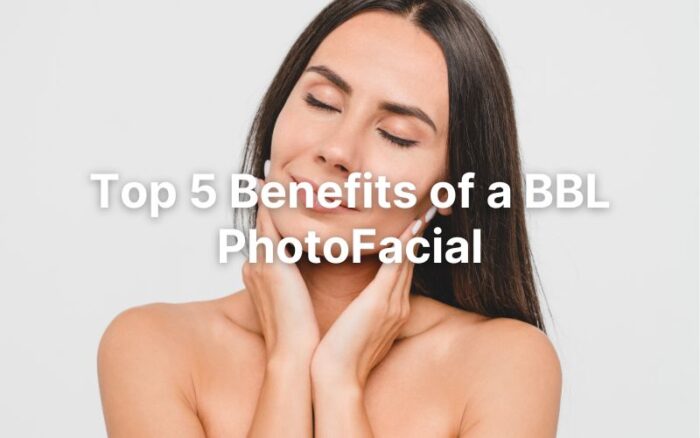What is Melasma Caused By?
Melasma can have many triggers. 90% of those affected are women, and the condition is primarily associated with hormonal changes, such as during pregnancy when hormones are changing rapidly. As Melanocytes produce more melanin when exposed to sunlight, melasma most frequently occurs in areas of the skin exposed to the sun, such as the face, neck, and chest.
Melasma also has a genetic component, and you are more likely to have it if a close relative does. Skin tone plays a role, affecting those with light brown skin tones most often and often most noticeably. Many people may have more than one risk factor contributing to their condition. Fortunately, Premier Vein & Body by Schwartz offers several treatments that work for melasma regardless of the cause.
How is Hyperpigmentation From Melasma Treated?
Unlike many sun and age-related skin issues that can be successfully treated with laser energy, such as a CO2 MicroLaserPeel, the inflammation triggered by the heat and light from a laser treatment can actually stimulate the skin cells that produce melanin to turn back on instead of clearing it up. Often, they turn on even more strongly than before. As it can take about two to three months for all of this new pigment to appear on the surface of your skin, patients experience a delayed response after initially thinking the laser treatment helped their Melasma, only to find that their uneven skin tone is suddenly worse than it started. This is where our non-laser energy skin resurfacing treatments shine!
PicoSure® Focus Laser Facial
Unlike most types of lasers, which utilize laser energy, which can make melasma worse, PicoSure® Focus uses short bursts of pressure energy that do not produce heat. As a result, it breaks up pigment particles without harming the skin. This energy also triggers collagen production. Treatment usually takes 15 to 20 minutes. This laser also treats concerns like sun damage, fine lines, and acne scars.
Opus Plasma Skin Resurfacing
The Opus Plasma is a skin resurfacing device that uses plasma energy and radio-frequency to deliver controlled heat energy to the surface of the skin. Similar to the PicoSure Focus treatment, Opus Plasma also does not utilize laser energy, making this an effective treatment for melasma or any hyperpigmentation. The energy creates tiny channels in the skin, promoting the growth of new collagen and elastin while helping to break up the clusters of melanin that cause melasma. As the skin heals, the melanin is dispersed more evenly, resulting in a more even skin tone.
TIXEL Skin Resurfacing
TIXEL is a newer revolutionary skin resurfacing device that safely delivers controlled heat at high temperatures to the skin without burning the skin’s surface. The heating with TIXEL is more superficial than with lasers, so there is less pain. It uses Thermal Energy (in place of laser energy) to target the surface of the skin in two very different ways. By first stimulating collagen and skin tightening for skin rejuvenation and, second, creating micro-channels in the skin that allow for enhanced absorption of topical products when applied to the skin’s surface, such as with Melasma and acne. TIXEL provides an effective but not overly aggressive treatment that sits between the results of non-ablative and ablative laser procedures. Along with treating Melasma and acne/acne scarring, a series of three TIXEL treatments can improve fine lines, wrinkles, and skin texture as well as reduce pore size. Along with being an ideal treatment for Melasma on the face, it is also safe to use on the neck, chest, and back of hands.
Carbon Laser Peel
This treatment begins with a carbon-based cream applied to your skin. The carbon immediately begins to absorb oils and other impurities. The PicoSure® laser is used to treat the skin, removing the carbon and the impurities it has absorbed. As a result, hyperpigmentation fades to leave your skin even-toned. This treatment is also known as the Hollywood Laser Peel and is a wonderful complementary treatment to one of the above-mentioned treatments.
MIRAPeel
This treatment combines wet abrasion (similar to a HydraFacial) with wet microneedling. It delivers powerful serums deep into the skin for maximum benefits. The final step is an LED light that calms the skin and triggers collagen production. It brightens and rejuvenates the skin to remove melasma and other hyperpigmentation issues by allowing your product to seep deeper into your skin. Patients love the “healthy glow” post-treatment, and it is also a wonderful complementary treatment to the more aggressive TIXEL, Opus Plasma, and PicoSure treatments, especially when your skin is feeling a little extra “parched” from products and topicals.



